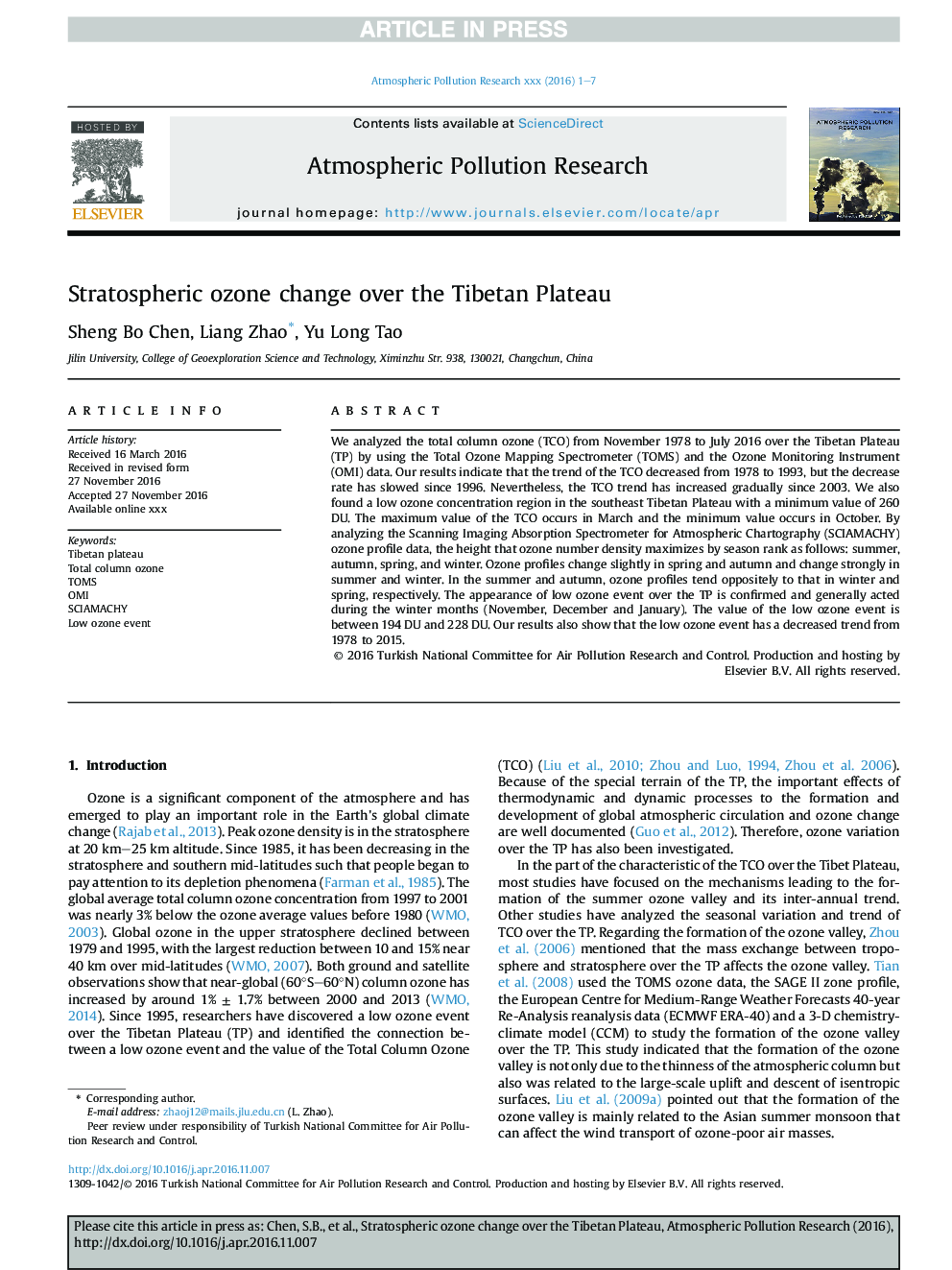| Article ID | Journal | Published Year | Pages | File Type |
|---|---|---|---|---|
| 8862761 | Atmospheric Pollution Research | 2017 | 7 Pages |
Abstract
We analyzed the total column ozone (TCO) from November 1978 to July 2016 over the Tibetan Plateau (TP) by using the Total Ozone Mapping Spectrometer (TOMS) and the Ozone Monitoring Instrument (OMI) data. Our results indicate that the trend of the TCO decreased from 1978 to 1993, but the decrease rate has slowed since 1996. Nevertheless, the TCO trend has increased gradually since 2003. We also found a low ozone concentration region in the southeast Tibetan Plateau with a minimum value of 260 DU. The maximum value of the TCO occurs in March and the minimum value occurs in October. By analyzing the Scanning Imaging Absorption Spectrometer for Atmospheric Chartography (SCIAMACHY) ozone profile data, the height that ozone number density maximizes by season rank as follows: summer, autumn, spring, and winter. Ozone profiles change slightly in spring and autumn and change strongly in summer and winter. In the summer and autumn, ozone profiles tend oppositely to that in winter and spring, respectively. The appearance of low ozone event over the TP is confirmed and generally acted during the winter months (November, December and January). The value of the low ozone event is between 194 DU and 228 DU. Our results also show that the low ozone event has a decreased trend from 1978 to 2015.
Related Topics
Physical Sciences and Engineering
Earth and Planetary Sciences
Atmospheric Science
Authors
Sheng Bo Chen, Liang Zhao, Yu Long Tao,
